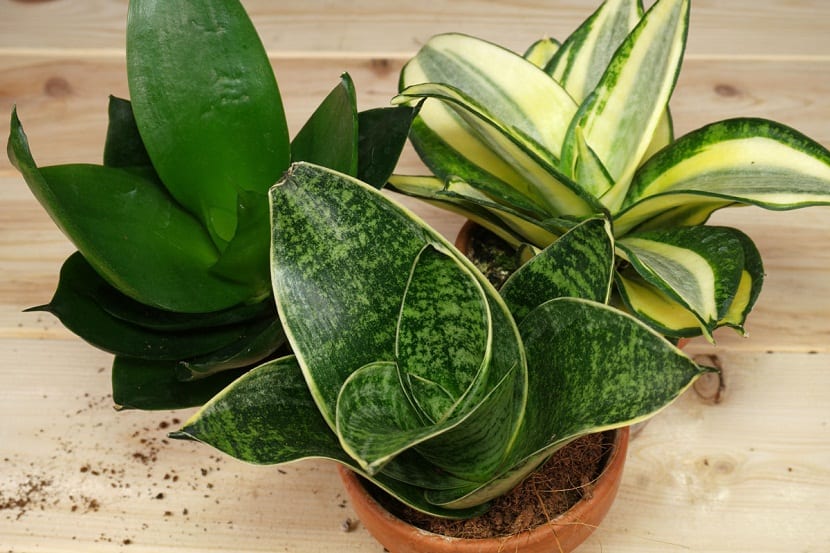
La sensevieria It is a plant that is also known by the names of cow's tongue, tiger's tongue, mother-in-law's tongue and by the sword of saint georgeIt is a fairly simple plant, very popular for its striped leaves, with streaks and in addition to this also for its ease of propagation.
This plant has its origin in African and Asian countries and you should know that for many years it was doubted that it belonged to the family of lilies or Agaves. This discussion could finally be resolved and the answer to this is that they really belong to the family of the liliaceae.
Characteristics of the Sensevieria

They are plants of which two main types can be found, those of great height and with select leaves, which have a similar sword shape and there are also those of low growth with the shape of a rosette.
The leaves are slightly thick and have quite striking markings that come from the thick part of the rhizome that is below the surface of the compost. It is important to remember that you have to be very careful do not cause damage to the tips of the blades, since if this happens it would cause the plant to stop growing.
The sensevieria trifasciata is the most common of all, the leaves that it has are thick with the shape of a green colored sword with stripes of a lighter color and the flowers it produces are whitish gray.
Sensevieria care
The care of the sensevieria plant, which is a ideal plant to sleepThey depend on the seasons and since we have known a little how these plants are, we will talk about it.
Care in spring and summer
If the plant is larger than the pot, you have to transplant it to a larger space when it is spring, using a suitable compost for it and of course, making sure that the pot has drainage holes. In the summer, the temperature can reach 24 ° C and the best place for the plant is one where it can enjoy lots of light and more if it is from the same sun.
The sensevieria is a plant that we must treat succulently when watering it and we have to let the compost dry and then put plenty of water on it. Do not forget to avoid excess, since the rhizome is buried in the compost and this can cause it to rot easily, being advisable to add liquid fertilizer every three weeks.
Care in autumn and winter
In these stations the temperature must be kept between 13 and 18 ° C. Keep the Sensevierias in places with lots of light and the amount of water that we must place must be small, at most once a month when the weather is milder, but we must make sure to keep the plants away from drafts.
Propagation of the Sensevieria

If tall plants grow to about 15 cm tall, they can be propagated by division, this being a benefit if said plant has grown a lot. They must be transplanted in the spring before new growth begins.
For those who have blades in the shape of a sword, we have to cut the rhizome using a sharp knife into about three parts depending on the size, leaving a few leaves and roots in each of the parts. For those that have a rosette shape, we also cut the rhizome leaving one of the growing rosettes in each part and they have begun to develop in the stolons of the main rhizome.
If we observe that the leaves begin to rot at the base and we observe brown spots, is a sign that the plant is rotting from excess water.
To solve it, we must remove the plant, cut the parts of the rhizome that are affected and let it dry for a few days. We remove the damaged leaves With a knife, we sprinkle the cuts made with sulfur and we plant it again.
Hello. I just read that you should not cut the ends of the senseviera because it would stop growing. The point is, I bought one a while ago, with only two blades. and I suspect they were rootless because they failed. I was able to rescue a leaf, rootless and half ruined. I cut off the dry top and planted it. And there it is, for more than a year. It does not dry out or grow. What can I do to make it grow?